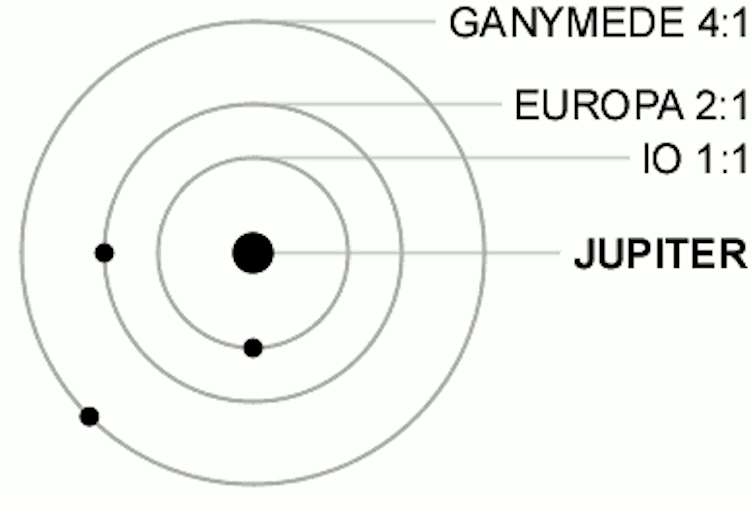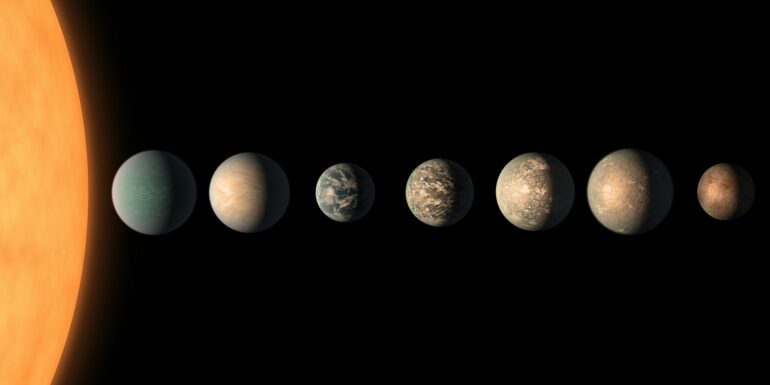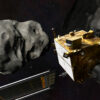Planets orbit their parent stars while separated by enormous distances – in our solar system, planets are like grains of sand in a region the size of a football field. The time that planets take to orbit their suns have no specific relationship to each other.
But sometimes, their orbits display striking patterns. For example, astronomers studying six planets orbiting a star 100 light years away have just found that they orbit their star with an almost rhythmic beat, in perfect synchrony. Each pair of planets completes their orbits in times that are the ratios of whole numbers, allowing the planets to align and exert a gravitational push and pull on the other during their orbit.
This type of gravitational alignment is called orbital resonance, and it’s like a harmony between distant planets.
I’m an astronomer who studies and writes about cosmology. Researchers have discovered over 5,600 exoplanets in the past 30 years, and their extraordinary diversity continues to surprise astronomers.
Harmony of the spheres
Greek mathematician Pythagoras discovered the principles of musical harmony 2,500 years ago by analyzing the sounds of blacksmiths’ hammers and plucked strings.
He believed mathematics was at the heart of the natural world and proposed that the Sun, Moon and planets each emit unique hums based on their orbital properties. He thought this “music of the spheres” would be imperceptible to the human ear.
Four hundred years ago, Johannes Kepler picked up this idea. He proposed that musical intervals and harmonies described the motions of the six known planets at the time.
To Kepler, the solar system had two basses, Jupiter and Saturn; a tenor, Mars; two altos, Venus and Earth; and a soprano, Mercury. These roles reflected how long it took each planet to orbit the Sun, lower speeds for the outer planets and higher speeds for the inner planets.
He called the book he wrote on these mathematical relationships “The Harmony of the World.” While these ideas have some similarities to the concept of orbital resonance, planets don’t actually make sounds, since sound can’t travel through the vacuum of space.
Orbital resonance
Resonance happens when planets or moons have orbital periods that are ratios of whole numbers. The orbital period is the time taken for a planet to make one complete circuit of the star. So, for example, two planets orbiting a star would be in a 2:1 resonance when one planet takes twice as long as the other to orbit the star. Resonance is seen in only 5% of planetary systems.

Orbital resonance, as seen with Jupiter’s moons, happens when planetary bodies’ orbits line up – for example, Io orbits Jupiter four times in the time it takes Europa to orbit twice and Ganymede to orbit once.
WolfmanSF/Wikimedia Commons
In the solar system, Neptune and Pluto are in a 3:2 resonance. There’s also a triple resonance, 4:2:1, among Jupiter’s three moons:…



